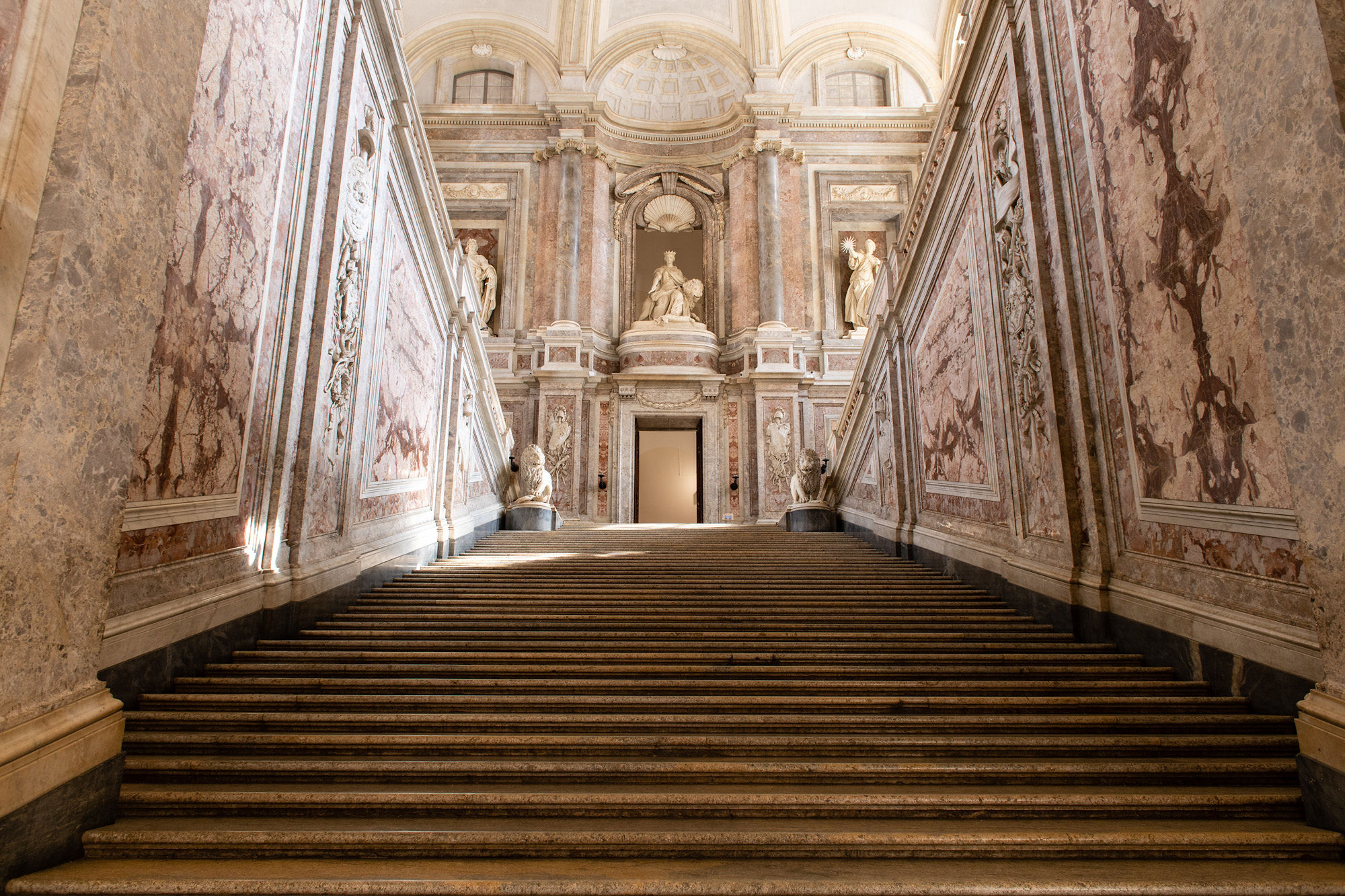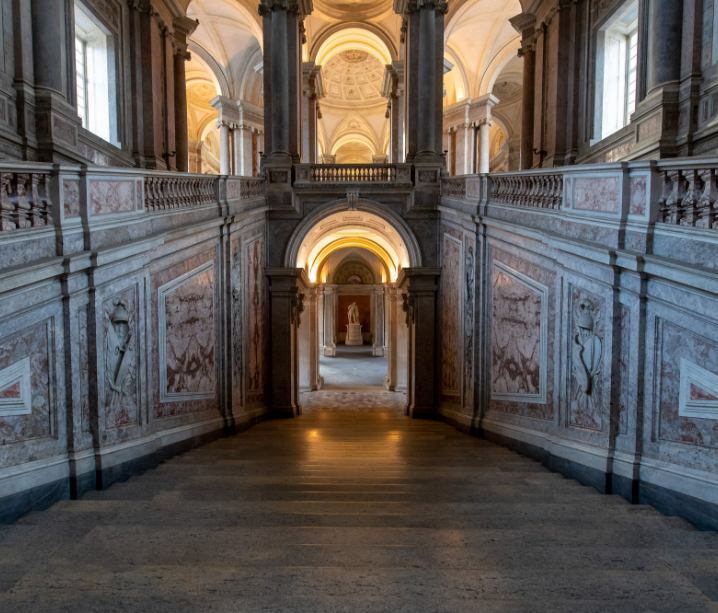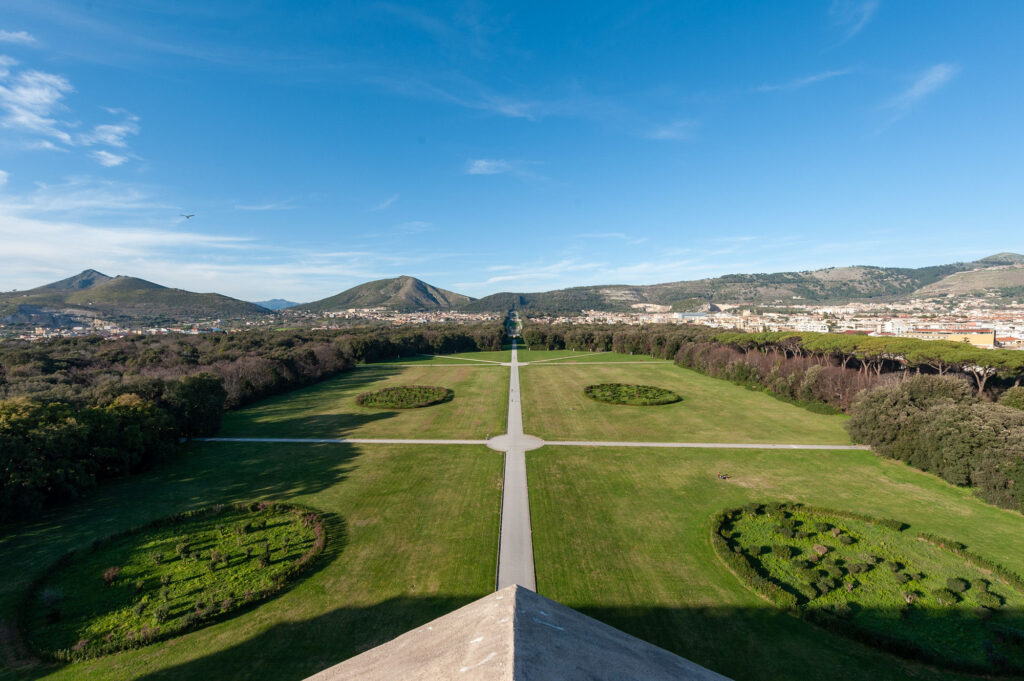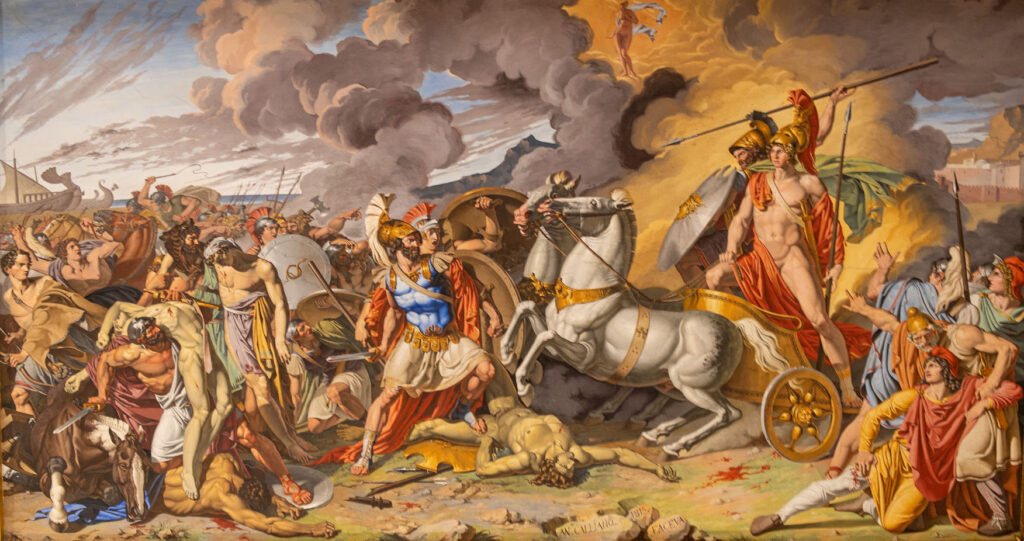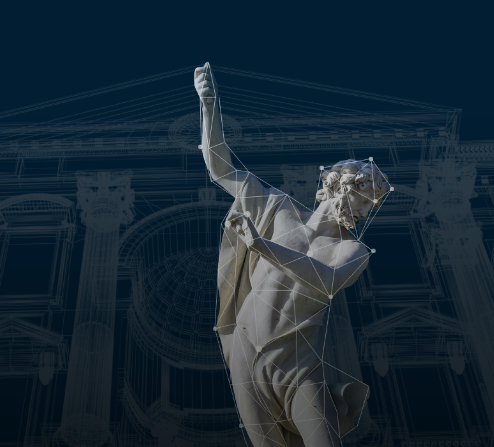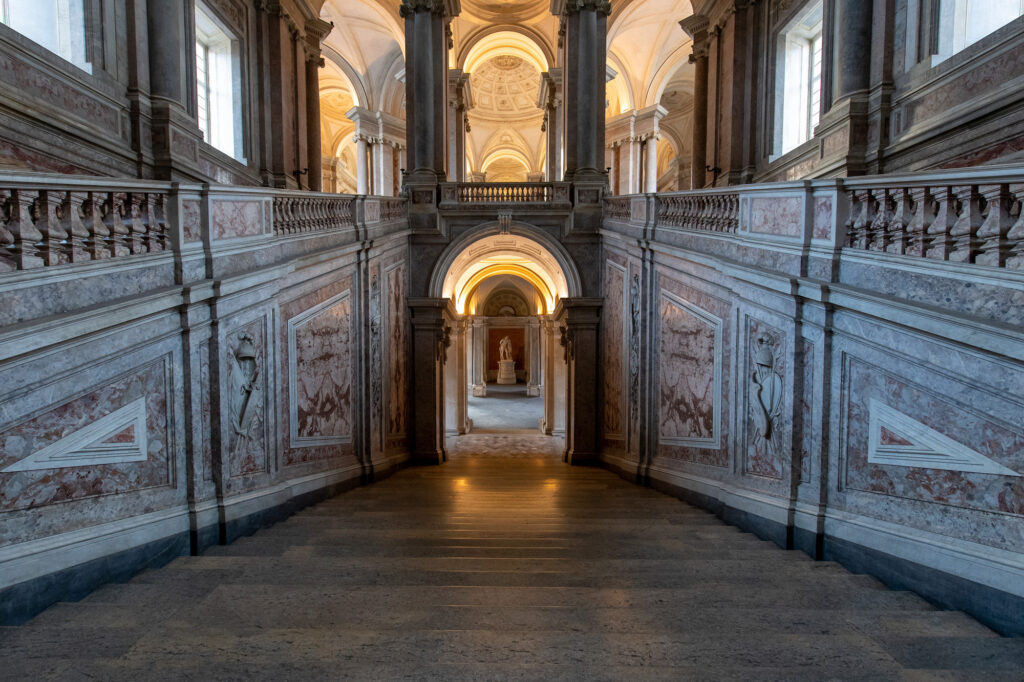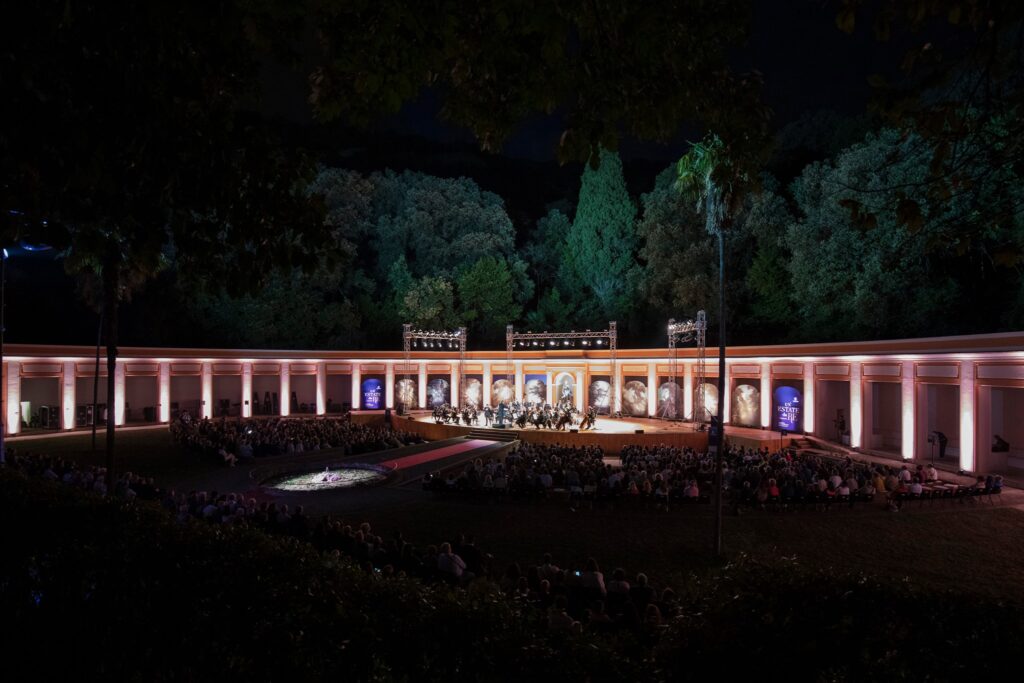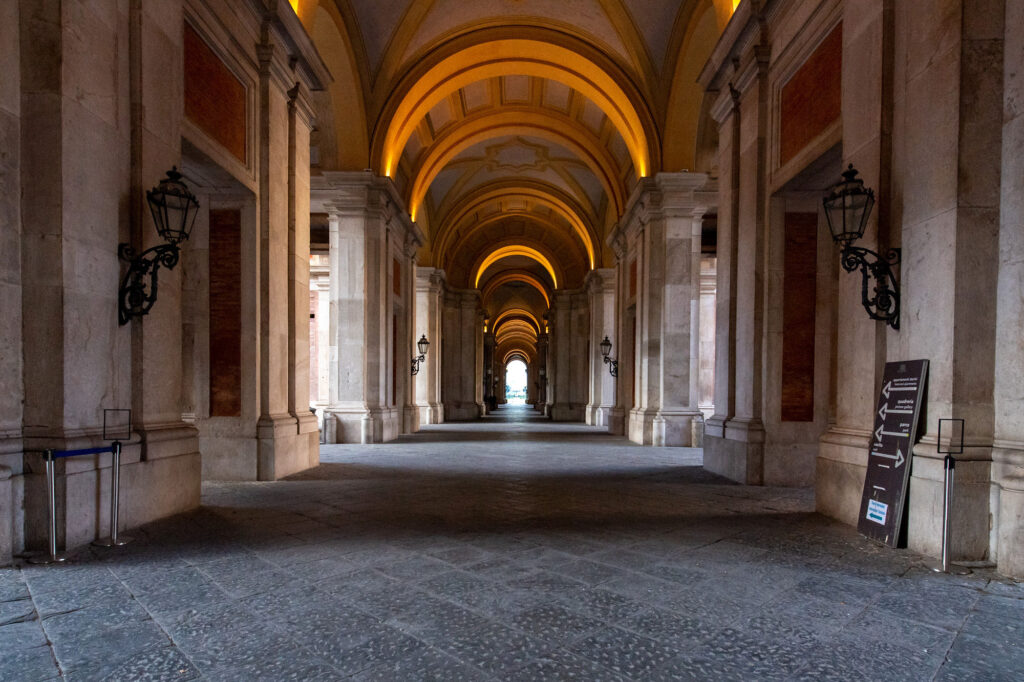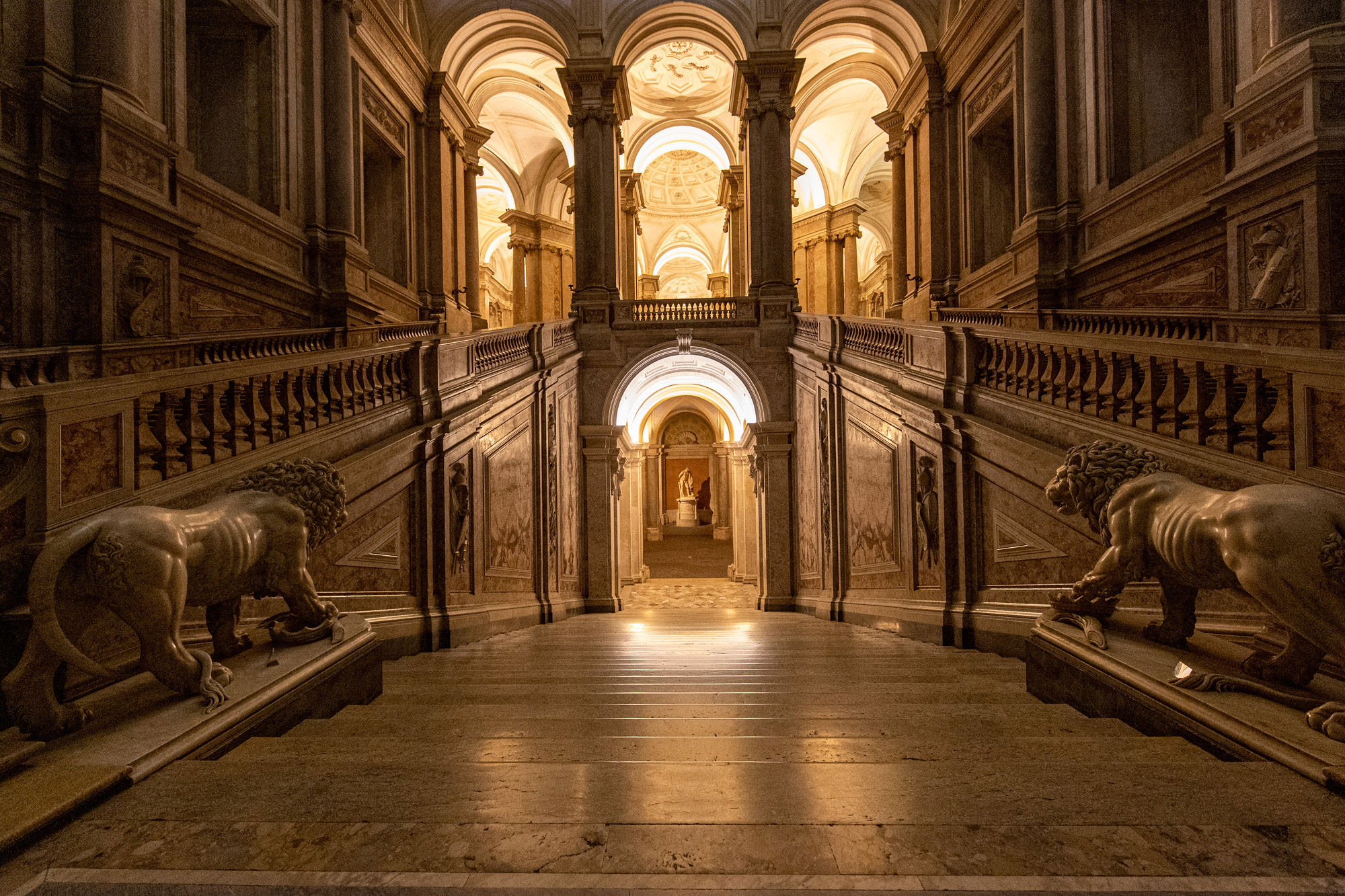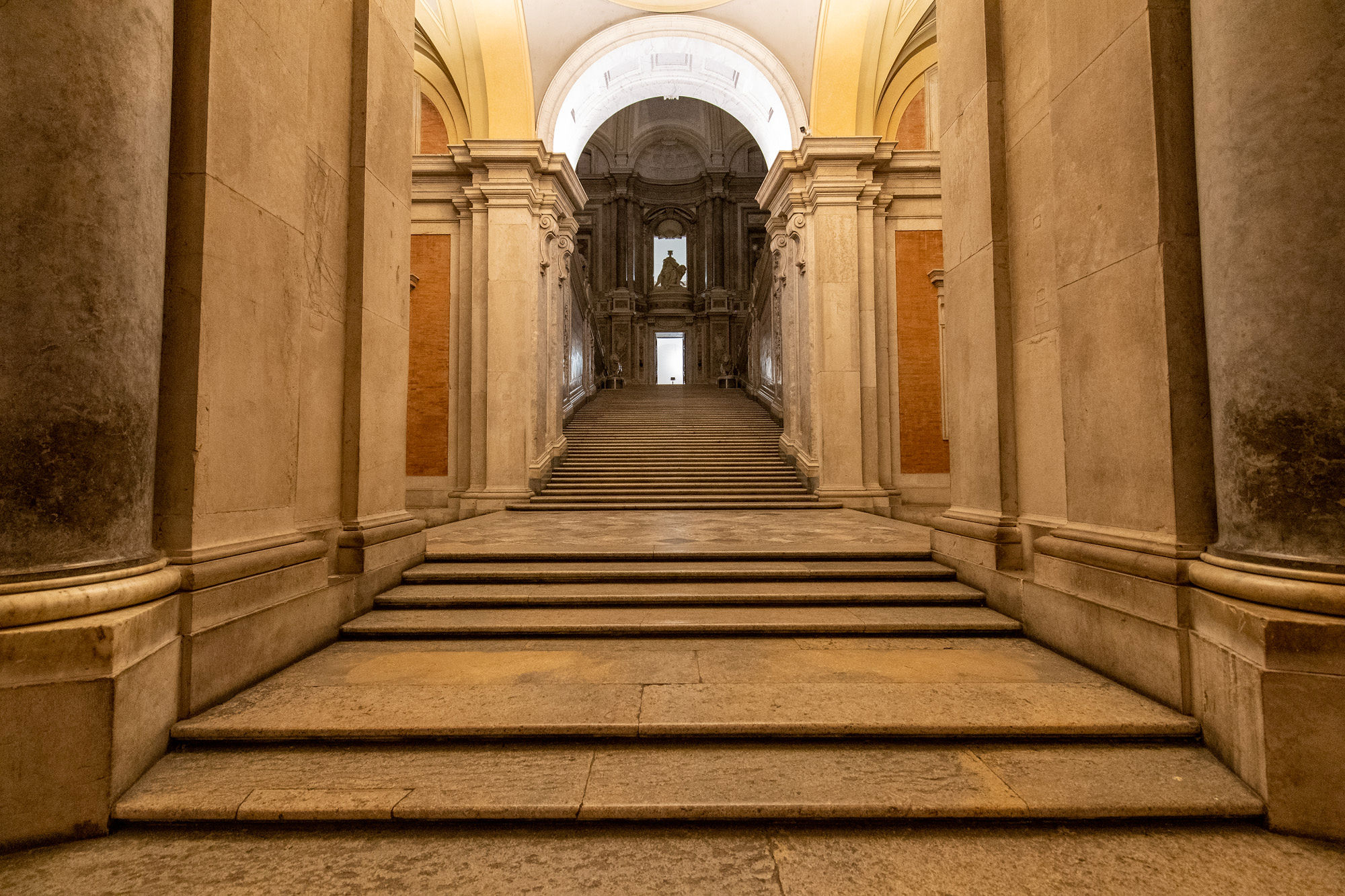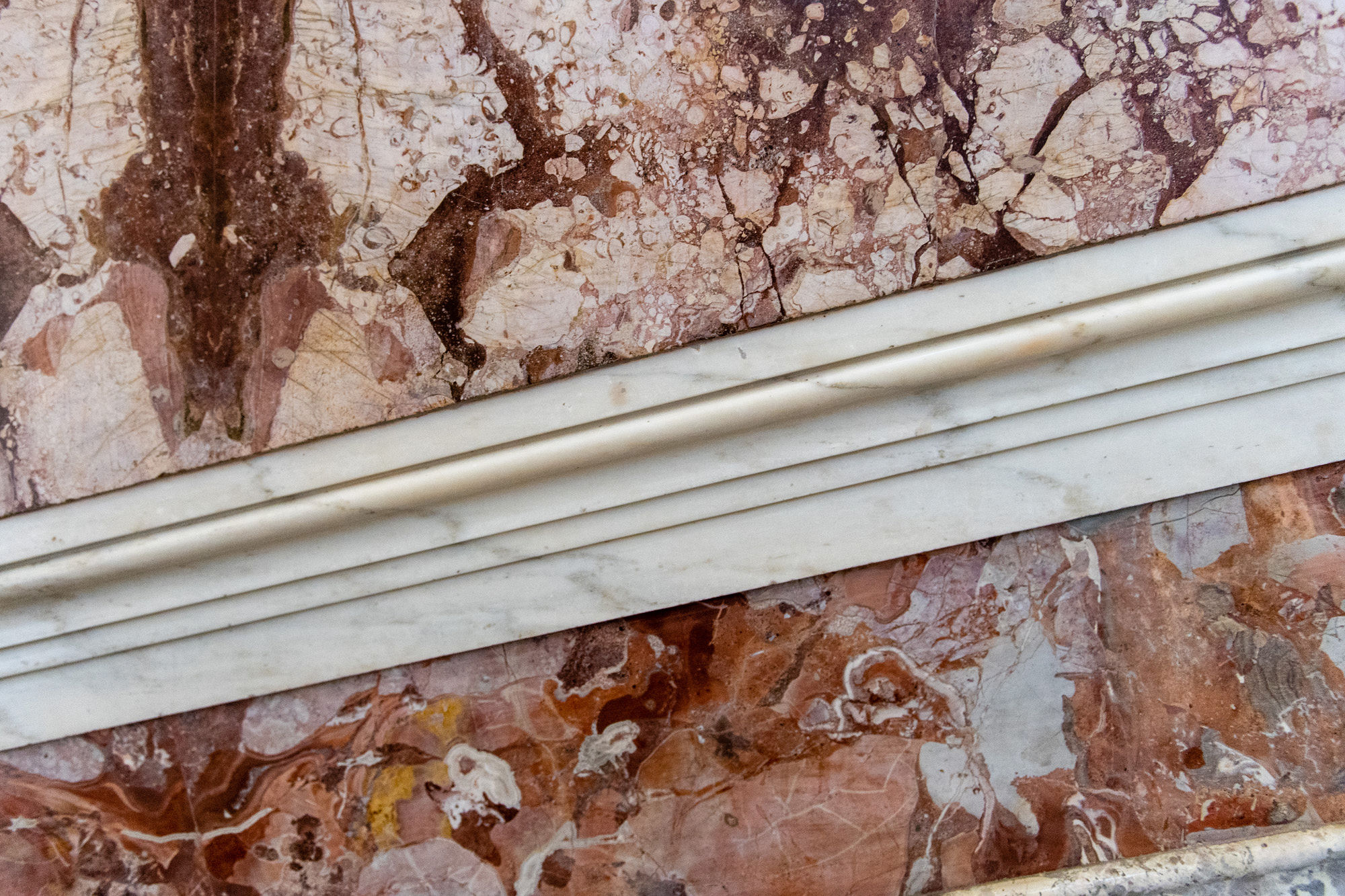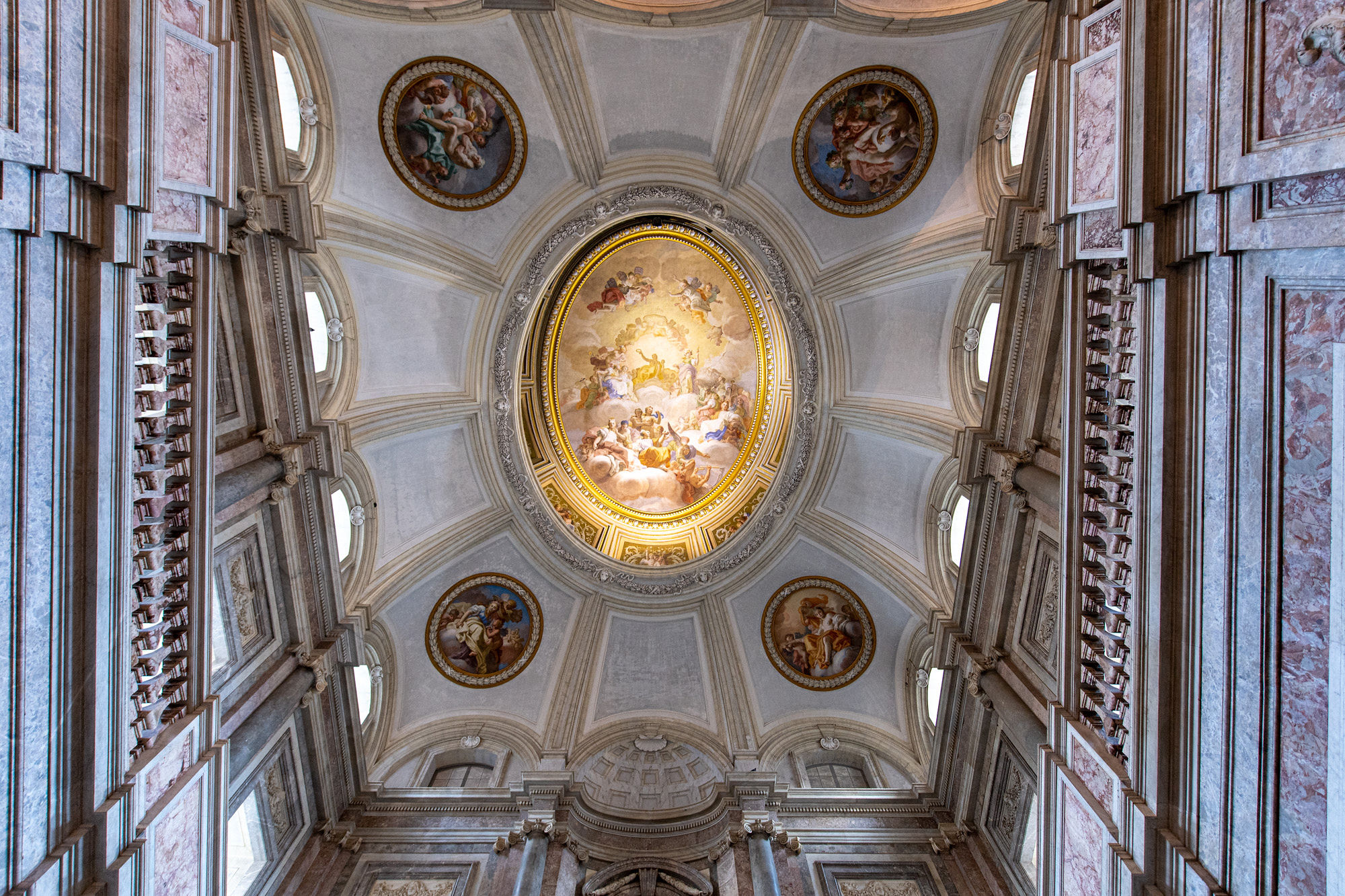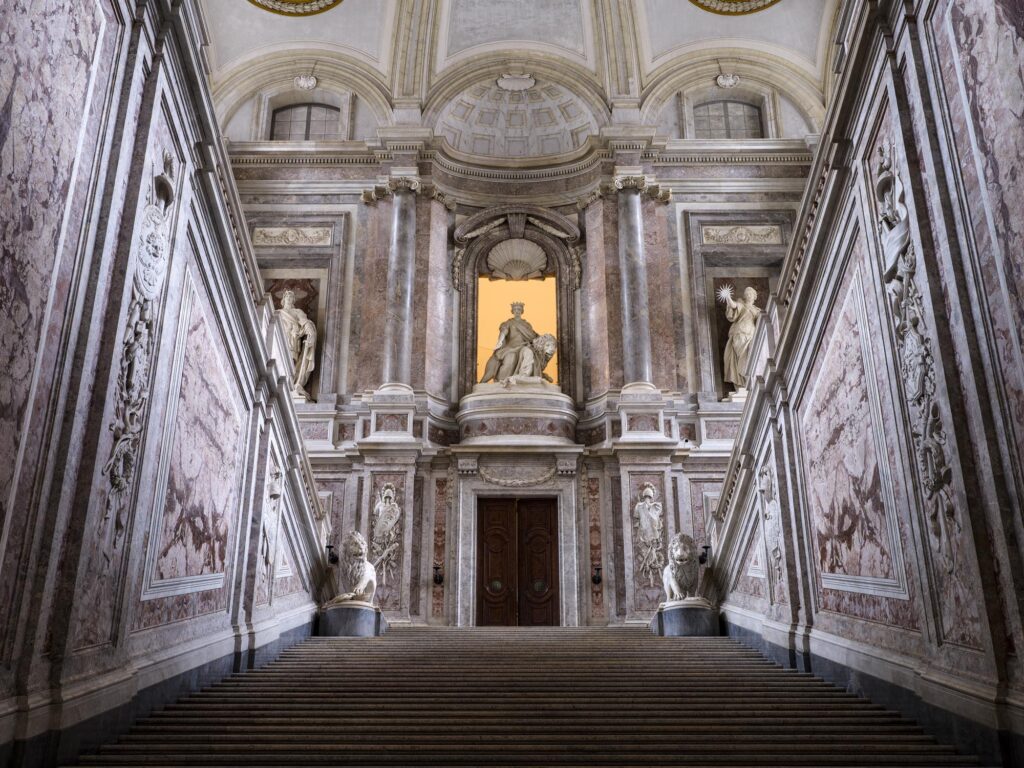
The Royal Palace is crossed on the ground floor by a long gallery with three naves, a perspective “spyglass” that visually connects the square in front of the Palace with the Royal Park. At the centre of the spyglass opens the lower vestibule, an octagonal space consisting of a complex interweaving of arches which, similar to theatrical wings, open onto the four internal courtyards. Scenically framed in front of the Staircase of Honour, there is a Roman statue among the largest from ancient times: it is a 3 meters high resting Hercules, coming from the Baths of Caracalla and belonging to the Farnese collection, inherited by Charles of Bourbon from his mother Elisabetta. Another Hercules of identical origin is now preserved in the National Archaeological Museum of Naples. The two Herculeses were placed one in front of the other in the Caracalla tepidarium.
The Grand Staircase, a perfect synthesis of classical rigour and Baroque theatrical scenography, gives access to the Royal Apartments. The central ramp guarded by two marble lions, symbols of arms and reason’s strength, is divided in the upper section into two lateral ramps. On the back wall three sculptures stand out: the
Royal Majesty by Tommaso Solari in the center, flanked on the left by Andrea Violani's
Merit and on the right by Gaetano Salomone's
Truth, representations of the virtues that a good sovereign must possess. On the elliptical vault of the Staircase, frescoed by Girolamo Starace Franchis with the
Palace of Apollo, the musicians were arranged - hidden from view - to triumphantly welcome the royal procession.
